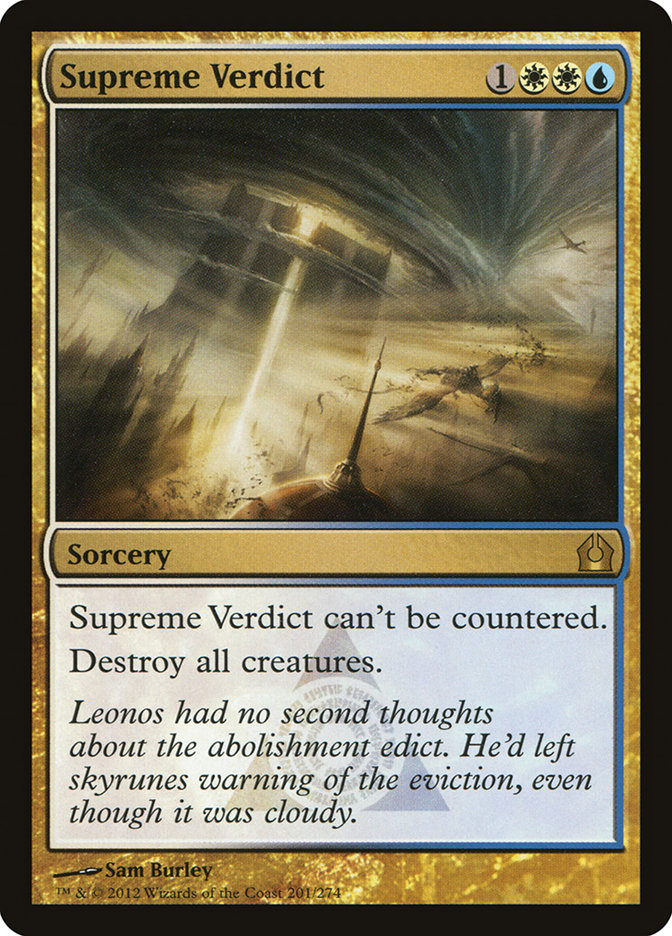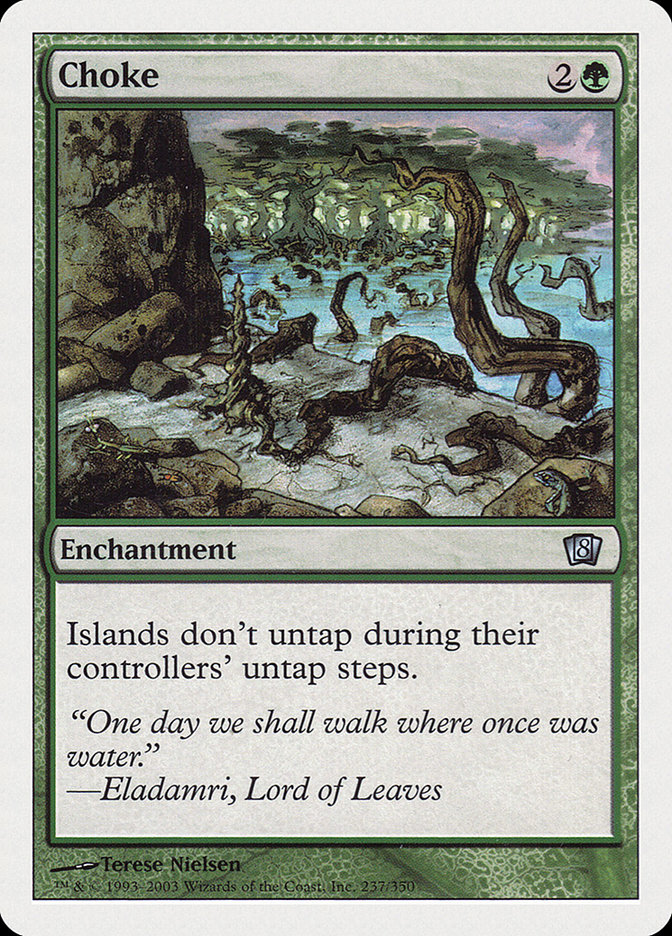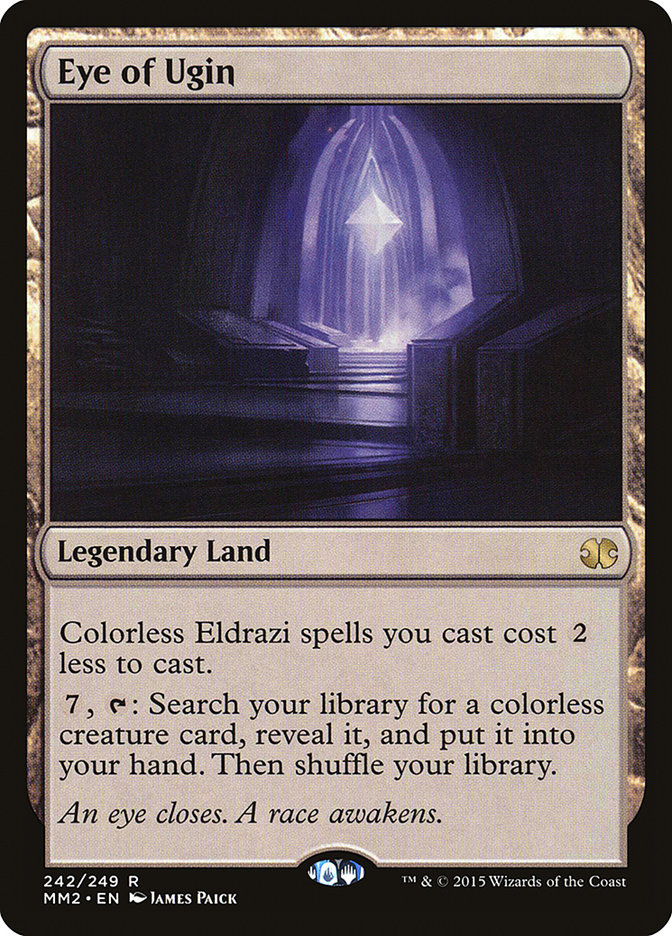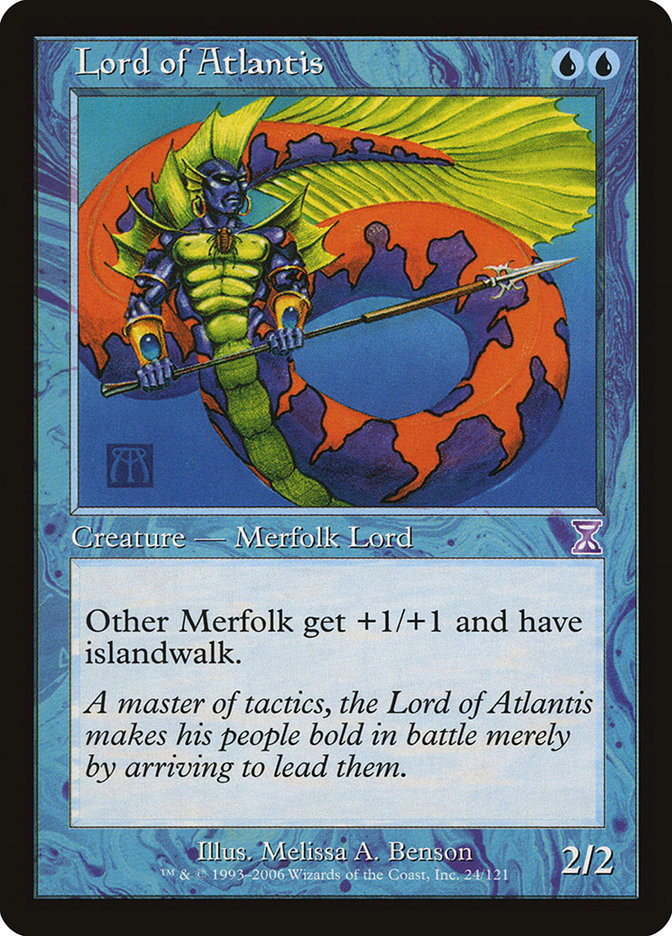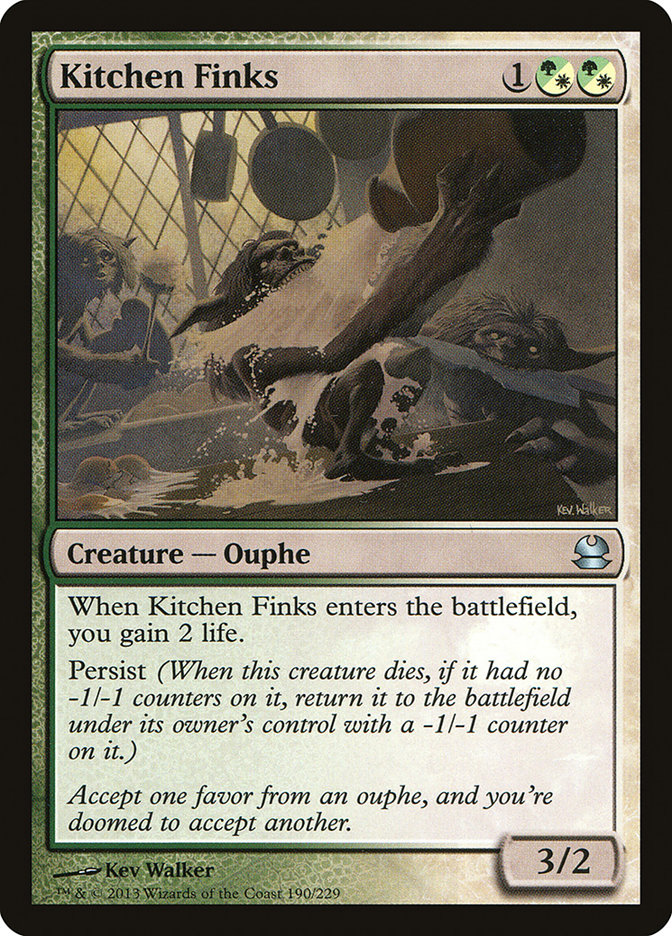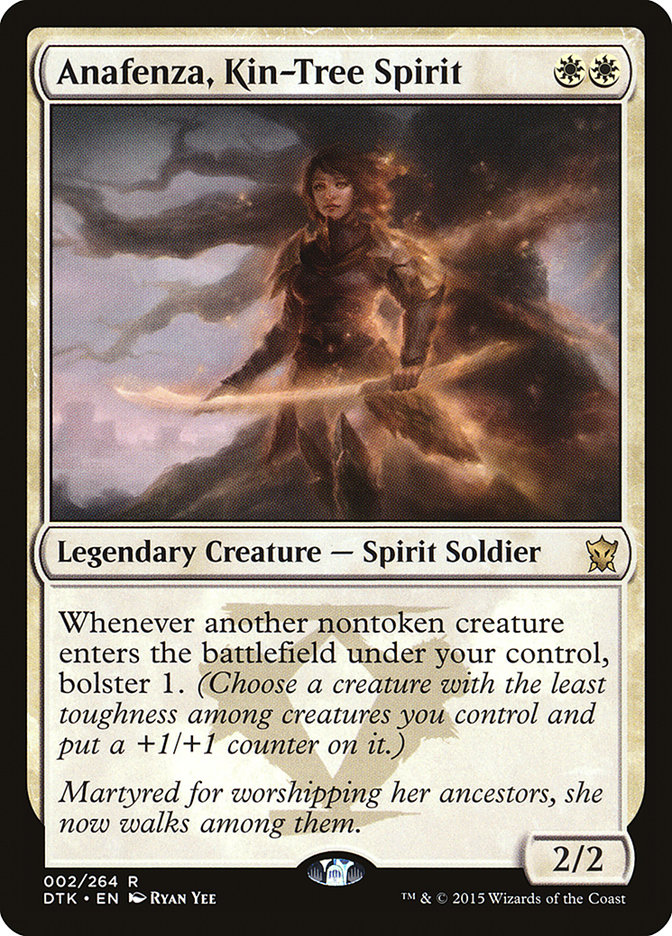Most metagame analysis articles and summaries focus on as many recorded matches of high-level Magic as possible. This is great because it gives you a snapshot of what you’ll need to beat if you want to take down your next SCG Tour® event, but it can fall short when it comes to preparing for your local StarCityGames.com Game Night.
The Four Big Metagames
While there are as many metagames as there are tournaments, they can be divided into four broad categories along two axes: paper vs. online and small vs. large. Small paper metagames are found at your local game store or one-day events like StarCityGames.com Invitational Qualifiers. Those often have different metagames than large paper events, like you’ll find at the SCG Tour® or a Grand Prix. Small online queues provide a fluid and low-commitment testing ground, and larger online events are a place where battle-tested decks and players compete for large prizes.
But these metagames aren’t disconnected from each other. Results of a large paper tournament usually influence all the other metagames. Similarly, consistent winners in large online metagames shift what people expect at upcoming paper events. For example, G/B Seasons Past Control was huge in the small Magic Online events during the Top 8 coverage, because everyone wanted their shot at the hot new breakout deck.
Small Paper Tournaments
Let’s start where most Magic players begin their tournament journey: their local game store. Most stores have a group of regular attendees for Friday Night Magic and StarCityGames.com Game Night. Cities also tend to have another group of the most enthusiastic players who show up for most Preliminary Pro Tour Qualifiers and StarCityGames.com Invitational Qualifiers. You will be playing against people you know, and you’ll begin to learn their habits.
You might learn that Sarah plays U/B Faeries or that Kerrick tends to play “whatever control deck won the last big paper event,” and you can prepare accordingly.
Local metagames also have less competitive players, more home-brewed decks, and problems reacting to new decks that come from low card availability. Your local Modern FNM players may pick up a sideboard card or two, or insert a spicy new card from the most recent set. But if your opponent has played Burn for the past month, they’re likely going to be playing Burn this week.
For example, players at my local game shop brought copies of Choke and Boil to combat the multiple Merfolk decks in our metagame. But the Death and Taxes player didn’t switch to another deck, even though it’s a bad matchup. Similarly, I leave my copies of Hurkyl’s Recall at home when I go to FNM, because nobody at our store plays Affinity.
This slow pattern of change can also lead to an inbred metagame. If players know what decks will show up and build accordingly, people might end up with a deck that’s great for their local metagame but would be terrible against a wider field. For example, last Friday my husband played a Chalice of the Void on one and another on two in Merfolk against a Burn player who had Ensnaring Bridge. Neither player had outs in their 75, and they ended up drawing. Tailoring your 75 to fight your local metagame can lead to some strange scenarios.
Large Paper Tournaments
When you attend a larger paper tournament, such as an SCG Tour® event or a Grand Prix, the metagame might be quite different from your local one. This metagame shifts on a weekly basis. Every week people respond to the best performers from the last week, and testing teams come up with new powerful brews. You can find a published Day 2 metagame snapshot online for these events, but what you can expect on Day 1 is much more varied.
Day 2 only represents the best-performing players and their decks, while Day 1 has a much wider audience. Local players who are excited for a big event to be in town will bring the deck they’re most comfortable with, often the same one they take to small paper tournaments. Deck builders and brewers will bring the new brew they’re most confident in to test it in open waters. Pros and grinders will bring whichever deck they think will be best-positioned in the expected metagame based on last week. Depending on your pairings, you could see it all: the new Jeskai Nahiri Control deck piloted by Pete Ingram; the latest Merfolk list piloted by Mrs. Mulligan herself; or even R/G Collected Company Elementals (brewed by Zack Lubow the week of a Grand Prix, and yes, it was a sweet deck!).
Creatures (26)
- 4 Ball Lightning
- 4 Spark Elemental
- 4 Groundbreaker
- 4 Hellspark Elemental
- 4 Tunnel Ignus
- 2 Splinterfright
- 4 Experiment One
Lands (20)
Spells (14)

If you’re not a multi-format all-star or a prolific deck builder, I recommend you bring the deck you know best to large paper tournaments. Certain decks are usually better-positioned in the metagame given pilots of equal skill and experience, but that edge is usually smaller than what you gain from playing a deck you know inside and out. Sometimes the power level of the format changes so that’s not true, such as before the ban of Eye of Ugin.
During this “Eldrazi Winter,” the Eldrazi decks were so much more powerful than the others that it was worth switching to the deck, even if you were less familiar with it. This is rarely the case, though, and you are usually best served if you play a deck you know.
For those who play Magic Online, there is another problem with large paper tournaments: card availability. If you have a different deck online from what you have in paper and you get more practice online, you’re not playing the deck you know best. At #SCGINDY I was asked by a few people why I wasn’t playing Jund, since I practiced with that deck online over the weeks leading up to the tournament. The simple answer is that I don’t own the cards, and Liliana of the Veil is a bit too expensive to pick up when I already own a full Merfolk deck.
Luckily, StarCityGames.com has a fantastic buylist if you want to sell one deck and buy cards for another, but I could never give up Merfolk.
Small Online Queues
The other side of the metagame coin is Magic Online. From open play in the Just Starting Out room to the Magic Online Championship Series, all levels of play are available online. The level of competition you’ll find online tends to match the expected value of prizes available in the event. People learning Magic Online or a new deck tend to play in open play; the most well-known professionals play in the MOCS.
The open play rooms have no entry fees and no prizes. Because there is no risk to dropping from a game at any time, this is where you often find people testing unfamiliar decks or brewing crazy combos. These games are one match long, and there is no commitment beyond that match. Similarly, the two-player queues are also one match long, but they offer prizes. An entry fee of two tickets (tix) or twenty play points (pp) means people are much less likely to leave in the middle of a match. You’ll get solid playtesting games of Magic here, around the same level as FNM or Game Night. If you win the match, you get 30pp; if you lose, you only get five.
These small, one-at-a-time queues have a metagame that shifts quickly. The Magic Online secondary market is incredibly fluid, so people tend to buy and sell cards to switch decks more often than in paper. Digital cards can’t get wear-and-tear and the buylists are just automated bots, so competition is fierce and buylist prices are usually around 90% of the retail cost of a card.
You will not find an inbred metagame like you might at a store, because there are thousands of players queueing up for these games at any given time. Instead, you can watch what is popular based on what you are facing and build a deck for a wider field. Magic Online also publishes a random sampling of the winning decks daily. You can use this as a reference to know what to expect next time you queue up for a game.
These games also fire constantly. If you feel like grabbing a quick match of magic on your lunch break, you can. If you want to try a crazy brew you dreamt at 4:00 am because you can’t sleep until you know if it works, you can. You don’t even have to put on pants to play online! The many games you can play in these queues help you learn a format, get to know the metagame, and test lots of matchups.
Large Online Queues
Leagues are the entry point for bigger competition online. You lock in a deck for a full five rounds, each of which you play on your own time. Matchmaking in leagues generally pairs you against players with the same net wins, or wins minus losses. Entry fees are larger, but so are the possible prizes. The metagame shifts more quickly than large paper tournaments because of the Magic Online economy, but generally more slowly than two-player queues. Just like in paper, many Magic Online players own one or two competitive decks. However, those decks often get tweaked on a daily basis.
Leagues are great because they fire on demand; you can always jump into a match of Magic Online, just like with two-player queues. There are still some scheduled events, though. You can find details at mtgo.com/calendar, but you can usually expect to see Pro Tour Qualifiers, MOCS Qualifiers, and unique events like the Power Nine Challenge. These events have even higher entry fees with high prizes to match. Many of them even require you to spend Qualifier Points, earned by going 4-1 or better in Leagues, to enter. You’d better bring your A game, because the competition here is often as high as Day 2 of an SCG Tour® event or Grand Prix.
One interesting difference in the top-tier decks of the metagame between paper and Magic Online has to do with the program itself. Each player on Magic Online has 25 minutes in a match, and time is tracked when you have priority like a chess clock. This means the longer you spend thinking and taking actions, the closer you get to running out of time. If that happens, you lose the entire match. Because there is no way to shortcut a combo online, combo decks tend to be less popular.
It takes six clicks to gain two life with Abzan Company‘s combo of Kitchen Finks, Viscera Seer, and Anafenza, Kin-Tree Spirit. Scrying to Murderous Redcap to turn “infinite” life into damage also takes longer than in paper. Because of this, you see fewer copies of Abzan Company and other click-intensive decks in the Magic Online metagame.
Recap
We all play Magic for different reasons. Some of us play for the fun experience. Some of us play to express ourselves. Some of us just have something to prove. But no matter what motivates you in this game, being aware of the metagame you’re involved in and its quirks help you better prepare. I hope this article helps you as you shift between paper and online tournaments, and attend events of different sizes. Even if you plan to take the same deck to every tournament, you can use what you’ve learned to prepare your sideboard and flexible deck slots.
Have a wonderful week, and as always: happy gaming!




